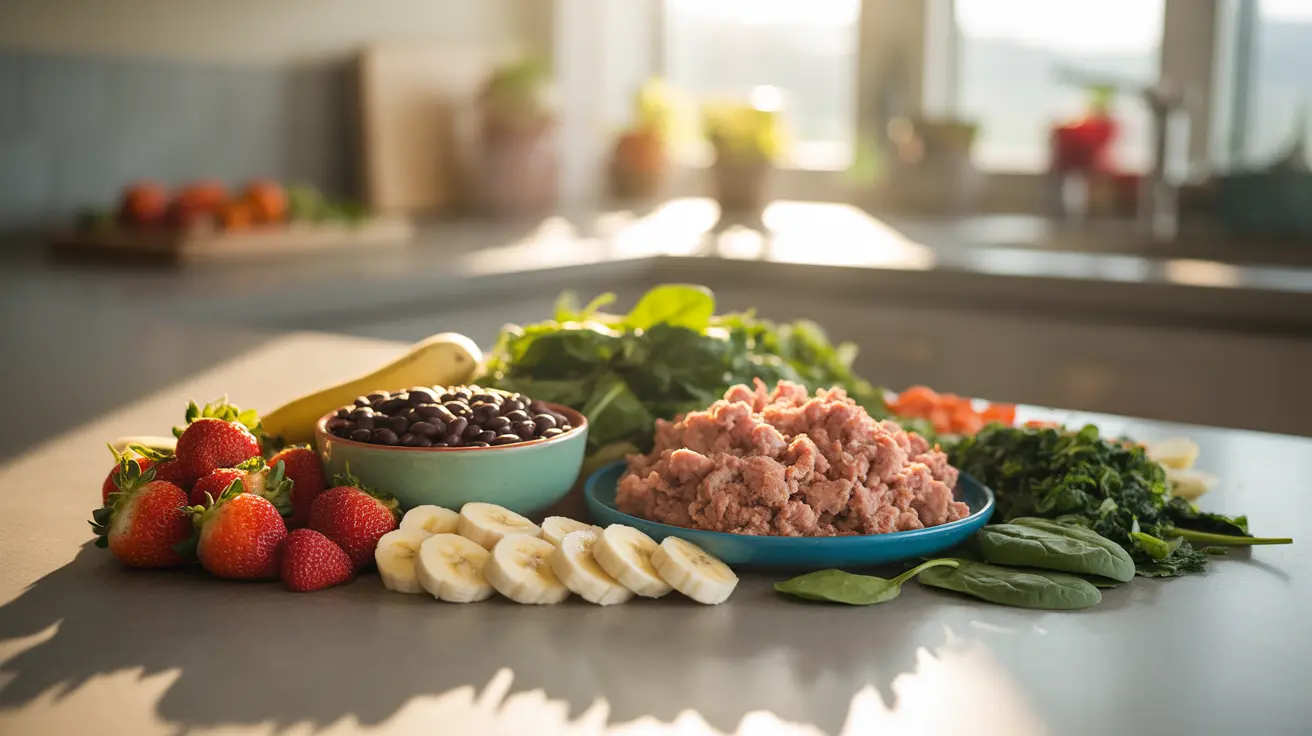Ensuring your toddler gets enough iron is crucial for their growth, cognitive development, and overall health. Iron plays a vital role in carrying oxygen throughout the body and supporting brain development during these critical early years.
Let's explore the best iron-rich food options for toddlers, understand their daily requirements, and learn how to optimize iron absorption for healthy development.
Understanding Iron Needs in Toddlers
Toddlers between ages 1-3 have specific iron requirements to support their rapid growth and development. Their bodies need iron to produce healthy red blood cells and maintain proper brain function.
Daily Iron Requirements
Toddlers aged 1-3 years need approximately 7 milligrams of iron daily. This requirement can be met through a balanced diet rich in iron-containing foods.
Best Iron-Rich Foods for Toddlers
Animal-Based Iron Sources
These foods contain heme iron, which is more easily absorbed by the body:
- Lean beef and ground meat
- Turkey and chicken
- Fish, especially tuna and salmon
- Egg yolks
- Dark poultry meat
Plant-Based Iron Sources
Plant sources provide non-heme iron and can be excellent options for vegetarian toddlers:
- Iron-fortified cereals
- Beans and lentils
- Quinoa
- Dark leafy greens
- Dried fruits like raisins
- Fortified bread products
Maximizing Iron Absorption
To help your toddler's body absorb iron more effectively, consider these strategies:
- Pair iron-rich foods with vitamin C sources
- Avoid serving milk with iron-rich meals
- Include citrus fruits or bell peppers in meals
- Space calcium-rich foods and iron-rich foods apart
Signs of Iron Deficiency in Toddlers
Be aware of these common indicators that your toddler might not be getting enough iron:
- Pale skin
- Fatigue or weakness
- Decreased appetite
- Behavioral changes
- Frequent infections
- Delayed growth and development
Meal Planning for Optimal Iron Intake
Create balanced meals that incorporate iron-rich foods throughout the day. Consider these toddler-friendly meal ideas:
- Breakfast: Iron-fortified cereal with strawberries
- Lunch: Bean and cheese quesadilla with orange slices
- Dinner: Small pieces of lean meat with steamed vegetables
- Snacks: Dried fruit and fortified crackers
Frequently Asked Questions
What are the best iron-rich foods to include in a toddler's diet?
The best iron-rich foods for toddlers include lean meats, poultry, fish, iron-fortified cereals, beans, lentils, and dark leafy greens. Animal sources provide more easily absorbed heme iron, while plant sources offer healthy non-heme iron options.
How can I improve iron absorption from plant-based foods for my toddler?
Combine iron-rich plant foods with vitamin C sources like citrus fruits, bell peppers, or strawberries. Avoid serving milk with iron-rich meals, as calcium can interfere with iron absorption. Cook in cast-iron cookware when possible.
What are the signs of iron deficiency or anemia in toddlers?
Common signs include pale skin, fatigue, irritability, decreased appetite, frequent infections, and delayed growth. If you notice these symptoms, consult your pediatrician for proper evaluation.
How much iron does a toddler need each day and how can I ensure they get enough?
Toddlers aged 1-3 need 7 milligrams of iron daily. Ensure adequate intake through a varied diet including both animal and plant-based iron sources, and consider iron-fortified foods as part of their regular meals.
Is it safe to give iron supplements to toddlers, and when are they necessary?
Iron supplements should only be given under pediatrician supervision. They may be necessary for toddlers with diagnosed iron deficiency, premature babies, or those following restricted diets. Never give iron supplements without medical guidance, as excess iron can be harmful.




